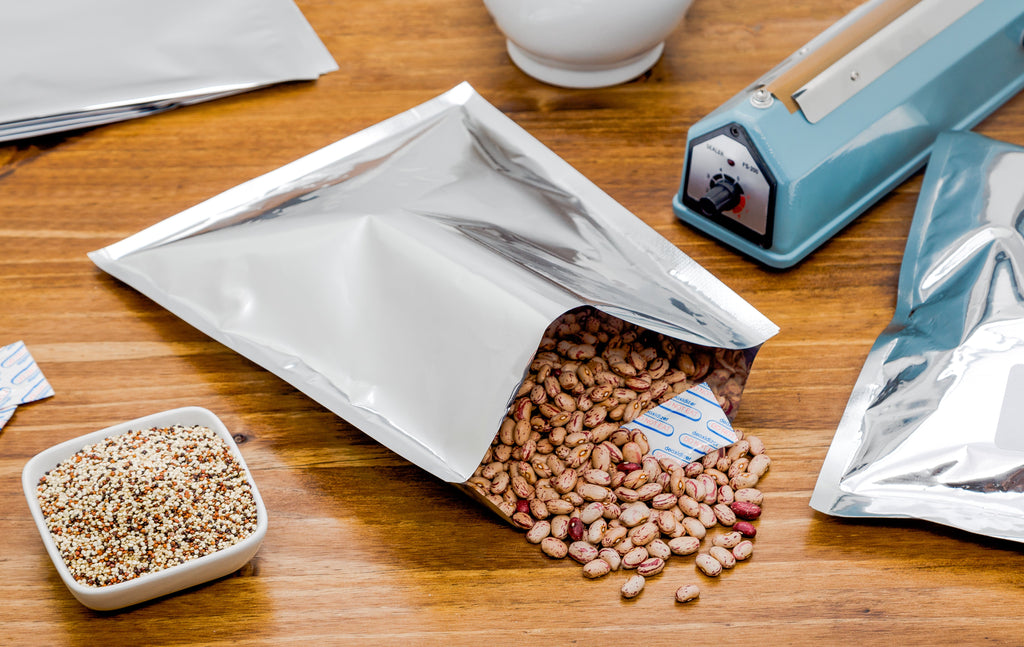The pandemic has changed our lives in many ways, so much so that those who had never heard of prepping are now trying to be prepared for when things go south.
Did your pandemic experience encourage you to start prepping? If so, we can help you master long-term food preservation so you can start building your emergency food supply.

In this blog post, you will learn about the three food storage layers that you can count on to prepare you for emergency situations. The plus side here is that you won’t need any expensive equipment to get started. All you need is Mylar bags for food storage, oxygen absorbers, and food-grade buckets.
So, let’s take a look at three food storage layers that will make you an efficient prepper!
- Kitchen Pantry Layer
The first layer that you should maintain is your kitchen pantry layer. This includes all of the food items that you store in your kitchen pantry, every food item you keep in your freezer and refrigerator, and anything that you consume on daily basis.
Your kitchen pantry layer must have enough food to last you one to two months. You must restock this layer by either buying regular groceries or rotating food items from your short-term layer (the second layer, which we will talk about next).

- Short-Term Layer
As the name suggests, this layer has food items that won’t last beyond a few months or a year. This is also the first layer of prepping.
The key benefit of creating a short-term food storage layer is availability of food to restock the kitchen pantry layer. This also streamlines rotation. The short-term layer includes shelf-stable food items, preserved home foods, bulk foods, and anything that is in your freezer.
When creating a short-term food storage layer, you can keep the shelf-stable foods in their original packaging. For bulk foods, you can use food-grade buckets along with oxygen absorbers. And if you want to use glass jars, make sure you vacuum seal them.
Whenever you go grocery shopping, you should be buying food that you can use to restock the short-term layer as you will eventually use these food items to restock your kitchen pantry layer.

- Long-Term Layer
Now, this is the actual food storage layer that will help you get through an emergency situation. The food items in this storage layer are meant to have a shelf-life of 10-30 years!
You can use a Mylar food storage bag or buckets lined with Mylar bags to extend the life of food items in this storage layer.
The long-term layer should have dry grains, rice, oats, pasta, dry beans and more. This should also include any commercial dehydrated food items and freeze-dried foods.

Final Takeaway
Food prepping does not happen overnight; it is a process which requires proper planning and organization. If you just began your food prepping journey, you need to observe the exact needs of your family in both the short-term and long-term. You should include food items that you usually eat. Afterall, you don’t want to prep anything you wouldn’t want to eat.
If you need any prepping essentials, such as Mylar bags and oxygen absorbers, get in touch with us here at Wallaby! We are amongst the leading companies that manufacture mylar bags with BPA-free, food-grade, and food safe materials.
You can count on us to keep your food fresh for years to come! We offer moisture-proof, airtight, and light-blocking 1-gallon and 5-gallon mylar bags; available to you as bundles which include our premium oxygen absorbers and identification labels to make prepping just that much easier.
Check out our online store to start building your three food storage layers today!SHARE:





